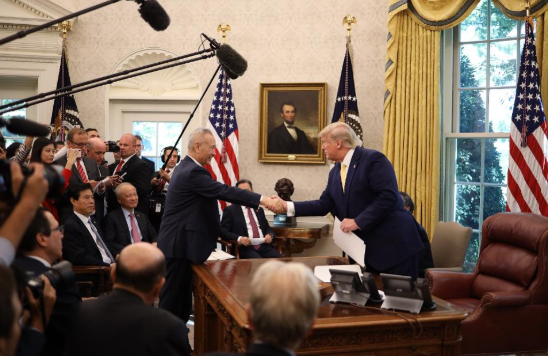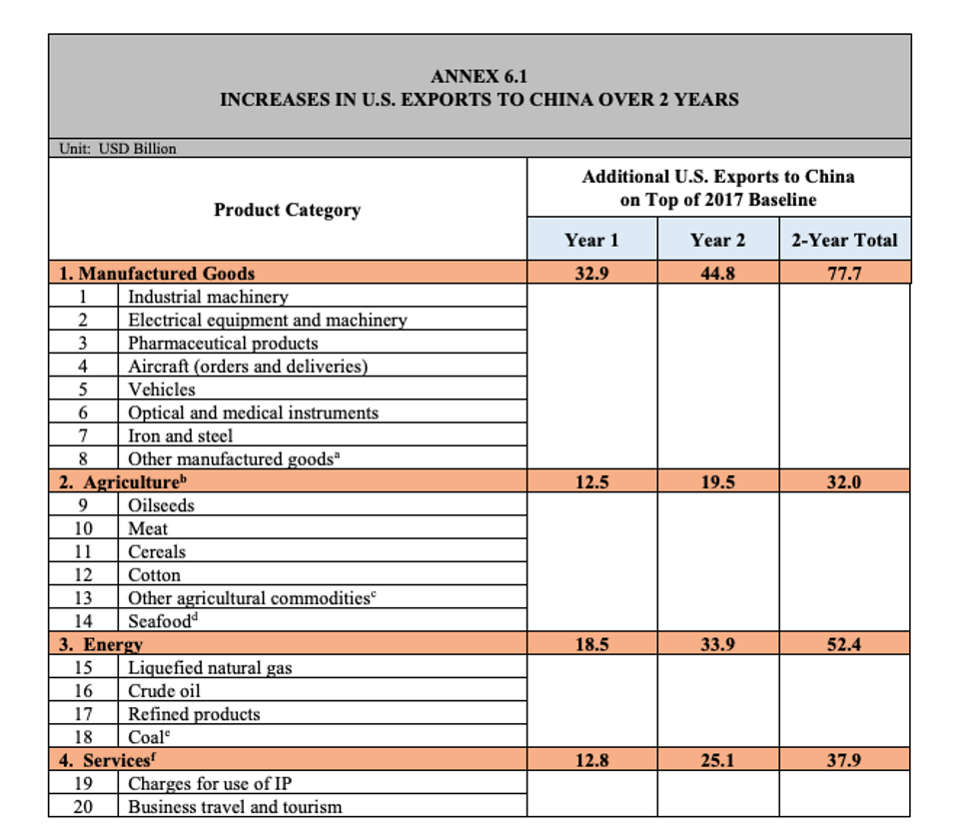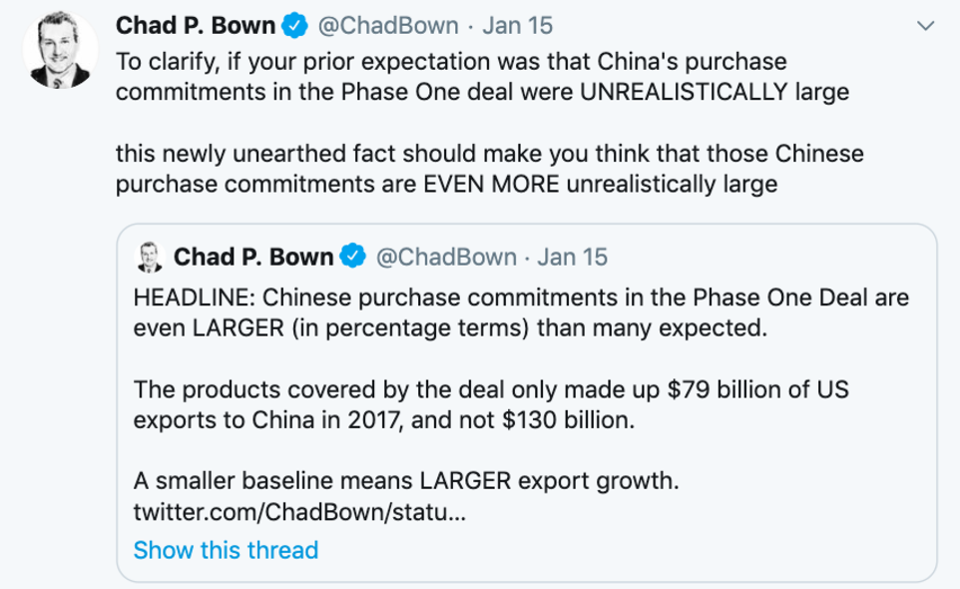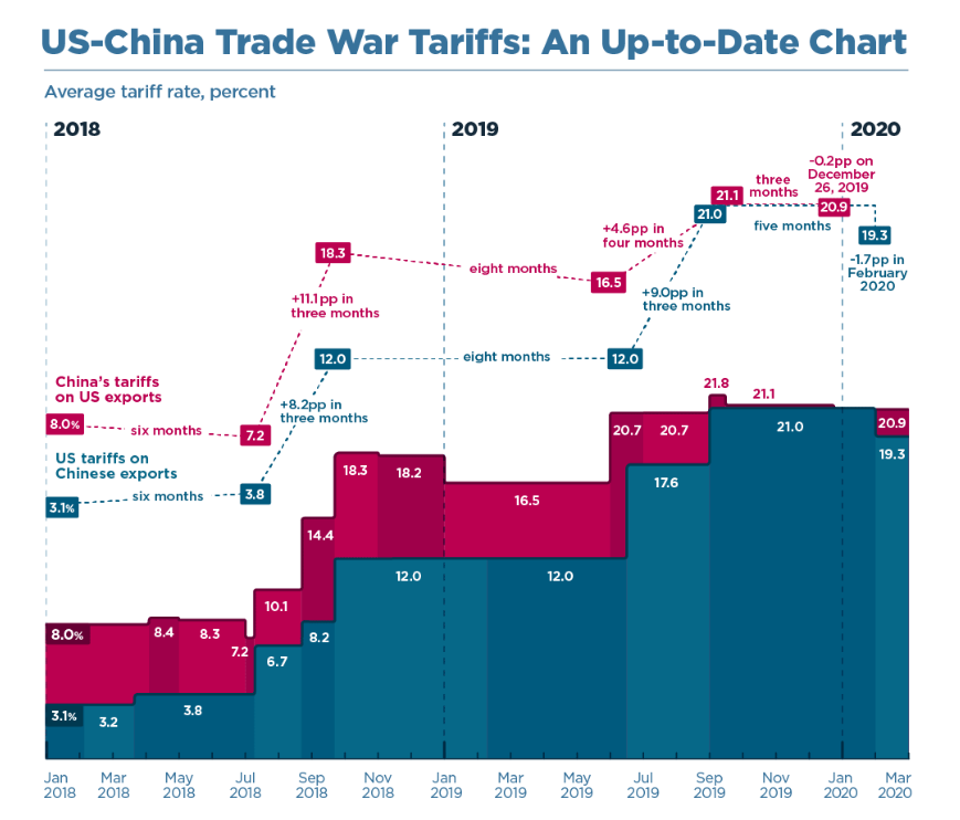Phase One U.S. China Trade Goals Are Insurmountable
2020.03.11

U.S. President Donald Trump shakes hands with Chinese Vice Premier Liu. (Photo by Win McNamee/Getty ... [+] GETTY IMAGES
President Trump signed the Phase One trade deal with China last Wednesday. One of the most touted goals is China importing $200 billion in additional manufactured goods, agricultural products, energy sources and services. One of the major challenges for this to occur is the huge percentage increases this will require.

Increases in U.S. exports to China over 2 years U.S. CHINA PHASE ONE TRADE DEAL

Increases in U.S. exports to China over 2 years U.S. CHINA PHASE ONE TRADE DEAL
In 2017 the U.S. exported $188 billion in Goods and Services to China. The Phase One deal calls for $76.7 billion above this level in 2020, which is a 41% increase, and $123.3 billion more or over a 65% increase in 2021.
2017 exports to China:
3 Reasons Trump Will Survive The Oil Price Crash
Oil Has Merely Recovered To Aramco Discount Levels With More Pain To Follow
Stocks Rally, Dow Gains More Than 1,100 Points After Trump Promises Economic Response To Coronavirus Fallout
Goods: $130 billion
Services: $58 billion
Total: $188 billion
2017 imports from China:
Goods: $505 billion
Services: $19 billion
Total: $524 billion
2017 deficits/surplus with China:
Goods: Deficit of $375 billion
Services: Surplus of $39 billion
Total: Deficit of $336 billion
What makes the $200 billion number even harder to achieve are two items
While $200 billion is a nice round number there are two items that essentially show that China importing that much more over two years is insurmountable.
Through November 2019 U.S. Goods exports to China have fallen by 15.9% compared to the first 11 months of 2017. Applying the same decline to December 2019 means Goods exports from the U.S. to China fell by approximately $20.6 billion between 2017 and 2019. Note that Goods exports to China were $129.8 billion in 2017 and are estimated to be $109.2 billion in 2019.
When the $20.6 billion decline is added to the additional $63.9 billion Goods export goal for 2020 it makes the increase $84.5 billion from 2019. This would be an increase of 77% compared to 2019. The total Goods exports will have to be $193.7 billion.
And 2021's Goods export goal increase of $98.2 billion becomes $118.8 billion, 109% above 2019's. The total Goods exports will have to be $228 billion.
The second item comes from Chad Bown, senior fellow at the Peterson Institute for International Economics. His analysis shows that the categories calling for the increased exports were only $79 billion in 2017, not the $130 billion total.

U.S. China Goods exports CHAD BOWN, TWITTER
This would mean the $63.9 billion in additional Goods exports in 2020 (not counting the $20.6 billion catch-up) have to increase by 81% and the $98.2 billion in 2021 will rise by 124%.
When you combine the $20.6 billion catch-up and the Phase One goals and compare the result to the smaller $79 billion 2019 base, the Goods export goals increases are 107% ($84.5 billion into $79 billion) in 2020 and 150% ($118.8 billion into $79 billion) for 2021. This does not look like a recipe for success.
The U.S. will still run a very large deficit with China
In 2017 the U.S. had a $336 billion deficit with China. If trade moves back to the 2017 level and China does buy an additional $123.3 billion in goods and services in 2021, there will still be a $200 billion plus deficit that year.
And to get to this level China will need to increase its imports from the U.S. by huge amounts. Probably the only way it can accomplish this is to substantially decrease imports from other countries. Besides creating issues with these other countries and the WTO or World Trade Organization, the price of various commodities may not change since worldwide demand isn't increasing, the deal may only shift where supplies are coming from.
A long road ahead
“That's a giant hole in the Phase One deal, and there's no way to get around it,” said Bown. He added, we're no closer today to resolving any of those fundamental frictions than we were before the trade war started.”
Bown made another observation that tariffs are not addressed in the 96 page document except to try and make sure the agreement does not run into problems with the WTO or World Trade Organization. There is no lowering of tariffs, which could make it even more challenging for China to increase U.S. imports by 77% to upwards of 150% since U.S. goods could be more expensive than other countries.
The chart below from Bown shows how U.S. tariffs on Chinese exports have risen from an average of 3.1% in January 2018 to a projected 19.3% next month. This indicates unless the U.S. tariffs are lowered it will be that much more difficult for China to hit the Phase One import targets.

U.S. China tariffs CHAD BOWN, PETERSON INSTITUTE FOR INTERNATIONAL ECONOMICS
Source: forbes
On April 21-27, 2020, the 41st Jinhan Fair for Home & Gifts will be held at the Guangzhou Poly World Trade Center Expo.Should you have any query, we are glad to extend help at marketing@jinhanfair.com or you may reach us by a phone call to 0086-20-89308925.
To discover more about JINHAN FAIR, Please click to view the previous post-show reports.
















 Visitor Registration
Visitor Registration Booth Application
Booth Application